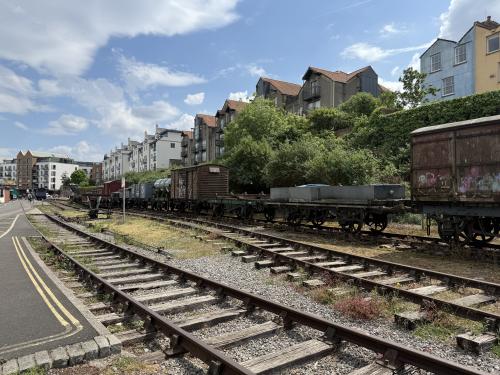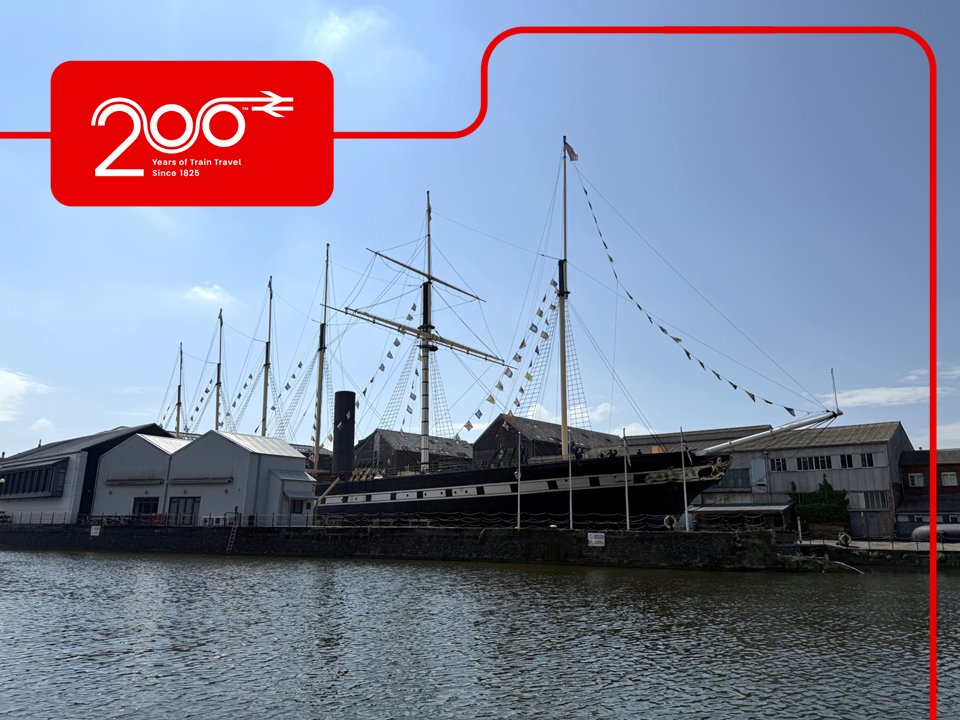Welcome all to this month’s edition of Railway 200 Fridays! To celebrate our announcement last month of Bristol as the host location for our Awards 2025 Film, we wanted to highlight some of the city’s links between maritime and rail heritage. This will also bring the focus onto two of our host organisations for the film: the ss Great Britain and M Shed!
Rail first came to Bristol in 1840, with the opening of Bristol Temple Meads station and the link created between this city and Bath. This formed one of the terminus sections for the Great Western Railway, which connected to London Paddington. The route, developed between 1833 and 1835, was to maintain Bristol’s role as the primary English Port for transatlantic trade, and its chief engineer was none other than Isambard Kingdom Brunel. One of the key industrial figures in nineteenth-century Britain, Brunel is a paradigmatic example of the links between rail and maritime heritage, developed since the early days of the railway.
A large part of this is due to his role in the development of the Great Western Steamship Company, which would extend the Great Western Railway from London and Bristol to the American East Coast. Its first vessel, the paddle steamer Great Western was, at the time of launching in 1837, the largest passenger vessel in the world.
Its second vessel, however, took technological advancements to new heights. Ss Great Britain, launched in 1843, with its maiden voyage in 1845, was the first ocean-going vessel to combine an iron hull with a screw engine, revolutionising sea travel and setting the standard for decades to come. After a varied career which saw her travel to New York and Australia, carrying passengers of all walks of life, she was eventually scuttled in 1937 and abandoned in the Falkland Islands. Luckily, in 1970, the SS Great Britain Project succeeded in refloating her and transporting her to Bristol Harbour, where today she remains as a successful visitor attraction and a focal point for research and dialogue around Brunel’s role in rail and maritime history.
Visiting the vessel last month as part of our recce for the film, one cannot overstate the sense of awe at the scale of ss Great Britain which, at the time of its launching, overtook the Great Western to become the largest passenger vessel in the world. The technological expertise of Brunel is clear both through direct interaction with the vessel as well as with other objects and their interpretation in the museum site. It is well worth a visit to better understand and appreciate how interconnected rail development was to maritime concerns in its early years.
Further along in time and space, one can find the Bristol Harbour Railway, created in 1872 to connect the Floating Harbour to Bristol Temple Meads. With this link, freight wagons could travel directly from the harbour as far afield as London and other linked locations through the Great Western Railway, with Bristol continuing its role as an intermodal platform between rail and sea transport. The railway operated until 1964, but, in 1970, a section of the track throughout the Floating Harbour quayside and the New Cut was converted to a Heritage Railway operated by the Bristol Industrial Museum.

Remains of the Bristol Harbour Railway. Credit NHS-UK
Nowadays, the remaining tracks and locomotives are operated by M Shed on the former site of Bristol Industrial Museum, as part of their industrial working exhibits. The museum hosts two Bristol-built preserved steam locomotives, Portbury and Henbury. These operated in a maritime context whilst in working service and are examples of the ways in which rail and maritime sectors were in constant interplay. You can take a steam train ride on the Harbour Railway throughout the summer, with upcoming trips being hosted on weekends from early July until early November. You can find more information here. M Shed is also home to three historic vessels, the fire float Pyronaut, steam tug Mayflower and tug John King.
And that concludes another Railway 200 Friday here at National Historic Ships UK! See you next time.
Further Reading
Ss Great Britain's post celebrating 180 years of railway in Bristol.

